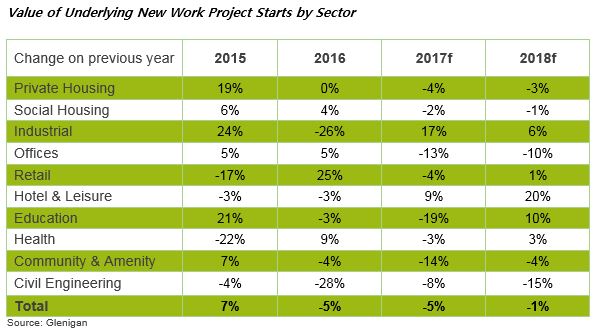This year a range of regulatory updates and government-led initiatives are expected to have an impact on the construction industry, potentially affecting thousands of tradespeople across the UK.
2018 could be instrumental in terms of making – or preparing to make – significant changes for trade professionals and the services they deliver. To help, IronmongeryDirect has produced an overview bringing together these key changes.
Independent Review of Building Regulations and Fire Safety
Following the tragedy of the Grenfell Tower fire in June 2017, the government launched an independent review into building regulations and fire safety. Led by Dame Judith Hackitt the review is examining the regulatory system around the design, construction and ongoing management of buildings in relation to fire safety and related compliance, as well as enforcement issues and international regulation and experience in this area.
An interim report was published in December 2017 which stated that the current regulatory system for ensuring fire safety in high-rise and complex buildings has been deemed “not fit for purpose”.
Speaking about the report, Dame Judith said: “There is plenty of good practice, but it is not difficult to see how those who are inclined to take shortcuts can do so. Change control and quality assurance are poor throughout the process. What is initially designed is not what is being built, and quality assurance of materials and people is seriously lacking.”
Tradespeople are advised to familiarise themselves with the findings when the full report is published in spring 2018, since it could bring about changes to working practices.
Additional Funding for New Homes
The autumn budget provided positive news for the construction sector which should start to filter though during 2018.
£15.3 billion of additional funds have been made available to facilitate the construction of 300,000 new homes a year over the next five years. In addition, the skills shortage in the construction sector has been addressed with the Chancellor setting aside £204 million to train younger trade professionals.
The government will also be introducing the new technical vocational qualifications – or ‘T Levels’ – and increasing the hours of training for technical students aged 16-19 by more than 50%.
Wiring Regs
Mainly affecting electrical professionals, but still very important for construction projects are the changes to the Wiring Regulations, due to be announced in July 2018.
Co-published by the Institution of Engineering and Technology (IET) and the British Standards Institution (BSI), the 18th Edition updates are likely to be wide-ranging and will affect the whole electro-technical industry. From 1st January 2019, it will be a requirement that all electrical installations designed after this date comply to the updated regulations.
It is important for tradespeople working in this field to at least be aware of these changes.
Consultation on Cash Retention
With a shift in focus to small business management, the current consultation launched by the Department for Business, Energy and Industrial Strategy is addressing the practice of cash retention under construction contracts.
According to a recent survey, one in three businesses (32%) said that between 3 and 10% of their turnover was being held in retentions.
The results of the consultation will not be released until later in 2018 but it is hoped that they will lead to changes that will result in prompt and fair payment for firms working in the construction sector, particularly small and start-up businesses.






